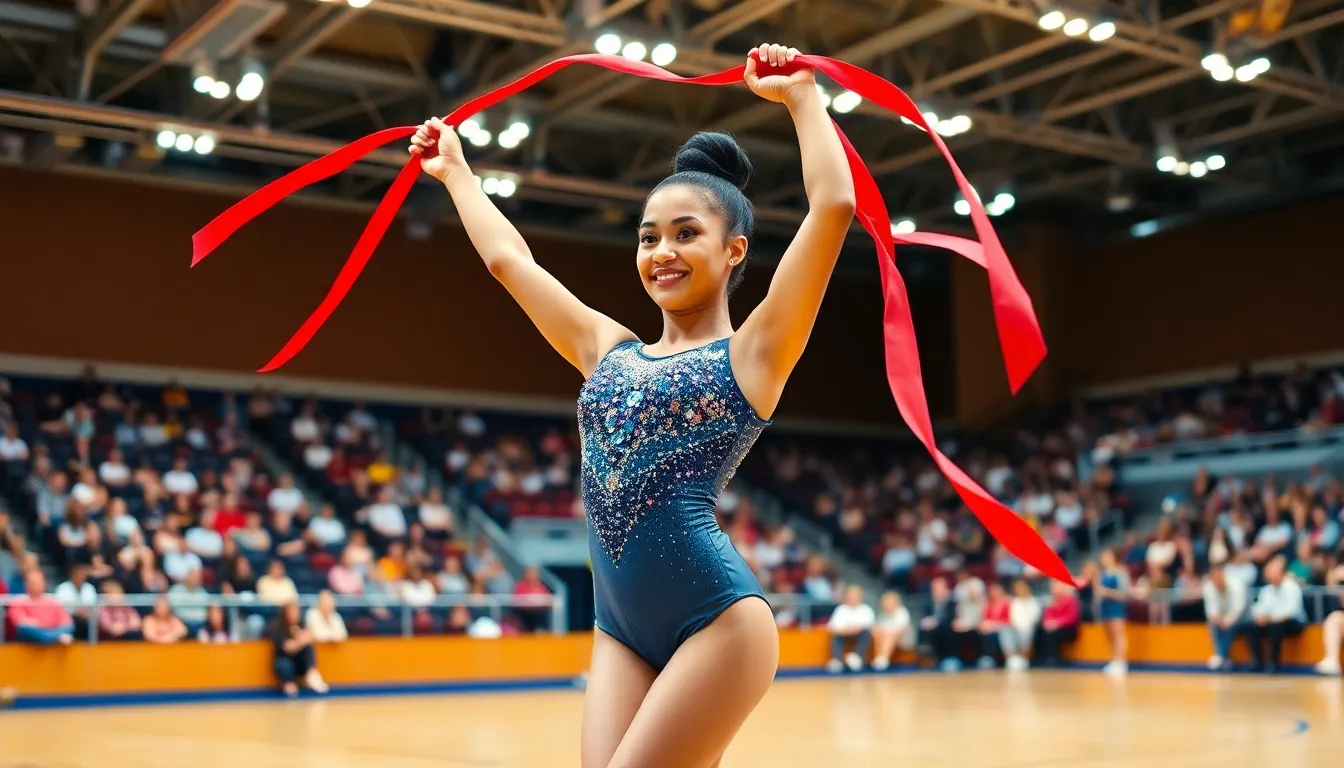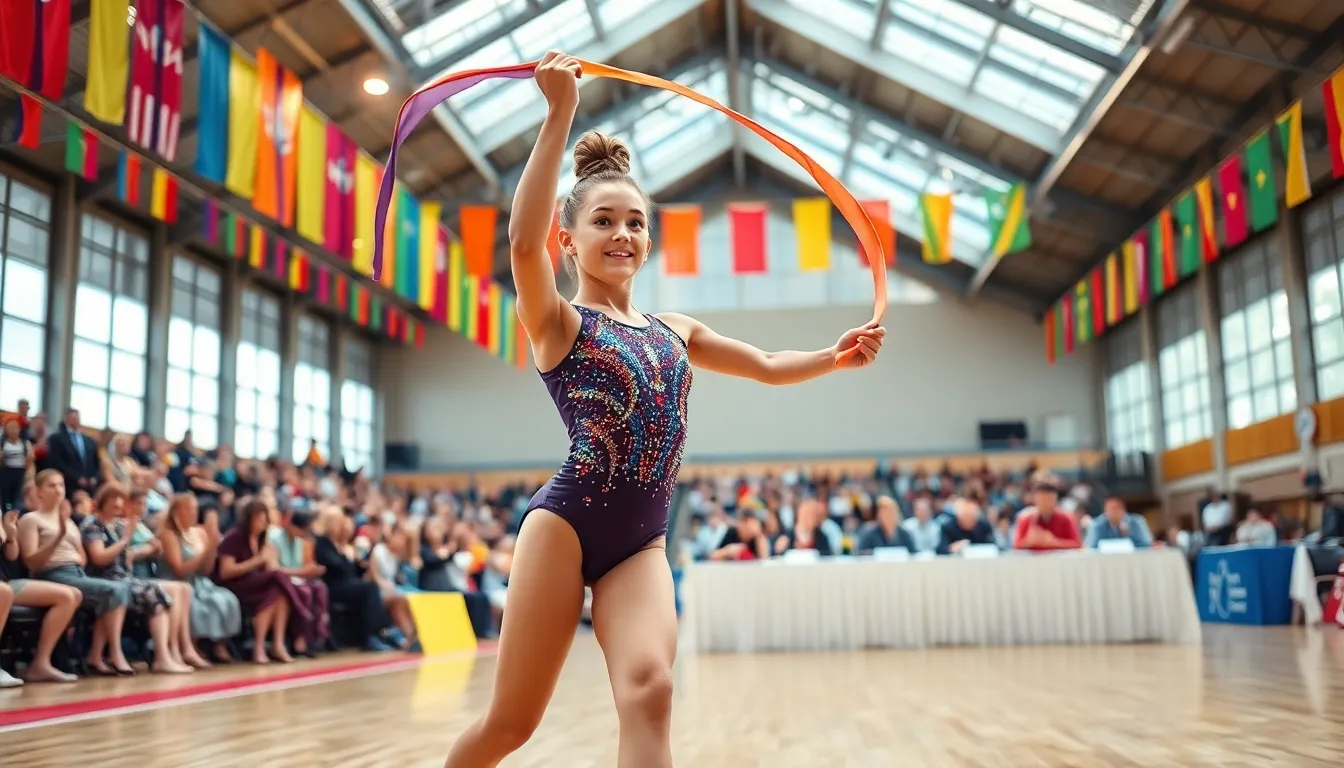Rhythmic gymnastics is one of the unique artistic sports that combine elements of ballet, gymnastics, dance, and apparatus manipulation. This visually stunning discipline has captured the hearts of many around the world, fostering a vast community of athletes and enthusiasts. In recent years, rhythmic gymnastics has evolved and gained increased visibility on the global stage, leading to thrilling competitions and a new generation of athletes. This article explores the latest updates in rhythmic gymnastics, including its evolution, major competitions, standout athletes, and its promising future.
Table of Contents
ToggleUnderstanding Rhythmic Gymnastics

Rhythmic gymnastics is distinctively characterized by its integration of dance and gymnastics with rhythmic movement, typically performed to music. Athletes perform routines using five different apparatus: rope, hoop, ball, clubs, and ribbon. Unlike traditional gymnastics, which emphasizes strength and acrobatics, rhythmic gymnastics focuses on elegance, artistry, and coordination.
The Evolution of Rhythmic Gymnastics
Originally developed in the 19th century, rhythmic gymnastics has undergone significant transformations. Initially showcased as a performance art, it transitioned into a competitive sport when it became an Olympic discipline in 1984. The introduction of unique apparatus and scoring systems further refined the sport, prompting athletes to innovate their routines and express their individuality.
Key Rules and Regulations
Competitive rhythmic gymnastics is governed by rules set forth by the International Gymnastics Federation (FIG). Each routine is evaluated based on difficulty and artistry, with judges scoring different elements, including execution, choreography, and use of the apparatus. The time limits for performances typically range from 1 to 2 minutes, and athletes must display a combination of artistic expression and technical precision.
Major Competitions and Events
Numerous high-profile competitions illuminate the rhythmic gymnastics calendar, showcasing the sport’s elite talent. The World Championships and the Olympic Games are among the most prestigious events, often setting the stage for new records and memorable performances.
Highlights from Recent Championships
Recent championships have been filled with remarkable moments. The latest World Championships held in 2023 produced standout performances, with athletes like Dina Averina taking home multiple medals. The 2024 Paris Olympics is poised to be a significant event, as it will feature many up-and-coming gymnasts eager to make their mark on the world stage alongside established stars.
Athletes to Watch
The world of rhythmic gymnastics is enriched by extraordinary talent. From veterans to newcomers, these athletes have not only succeeded in competitions but also inspired younger generations.
Training Regimens and Techniques
Training for rhythmic gymnastics involves rigorous schedules, emphasizing flexibility, strength, and coordination. Many gymnasts train for over 30 hours a week, balancing technical drills with choreography practice. Specific techniques like flexibility training and strength conditioning using resistance bands or bodyweight exercises are integral to their success.
The Role of Coaches and Support Staff
Coaches play a critical role in the development of rhythmic gymnasts, often working closely with athletes to refine their techniques and routines. Psychologists, nutritionists, and physiotherapists may also be part of the support system, ensuring that athletes maintain mental resilience and optimal health throughout their training.
Future of Rhythmic Gymnastics in Sports Culture
As rhythmic gymnastics continues to evolve, its integration into broader sports culture becomes increasingly apparent.
Emerging Trends and Innovations
Recent trends in rhythmic gymnastics include the incorporation of technology in training and performance analysis. Many clubs are harnessing video analysis software to improve technique and choreography. Also, there is a growing interest in diversity, prompting more inclusivity within the sport.
Increased Popularity and Fan Engagement
With social media platforms and streaming services providing broader access to competitions, rhythmic gymnastics is witnessing a surge in fan engagement. Athletes are leveraging these platforms to connect with fans, share training insights, and promote their routines, contributing to a more vibrant community around the sport.
Conclusion
The landscape of rhythmic gymnastics is ever-changing, marked by innovative trends and outstanding athletes. As the sport continues to grow, its capacity to captivate audiences and inspire future generations remains strong. With upcoming championships and the ongoing dedication of athletes, rhythmic gymnastics is set to maintain its place in the hearts of fans and participants alike, making it a delightful spectacle well worth following.




